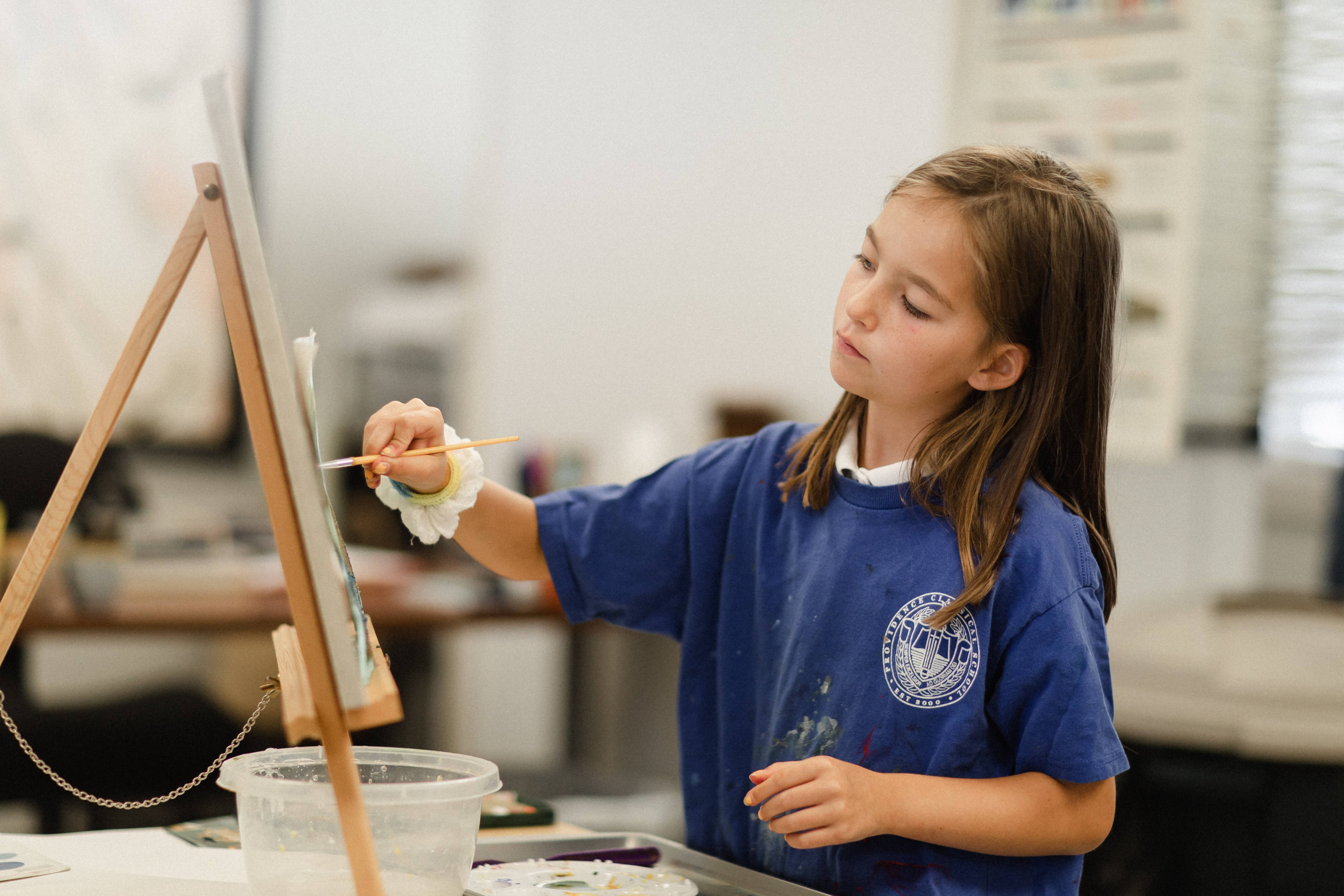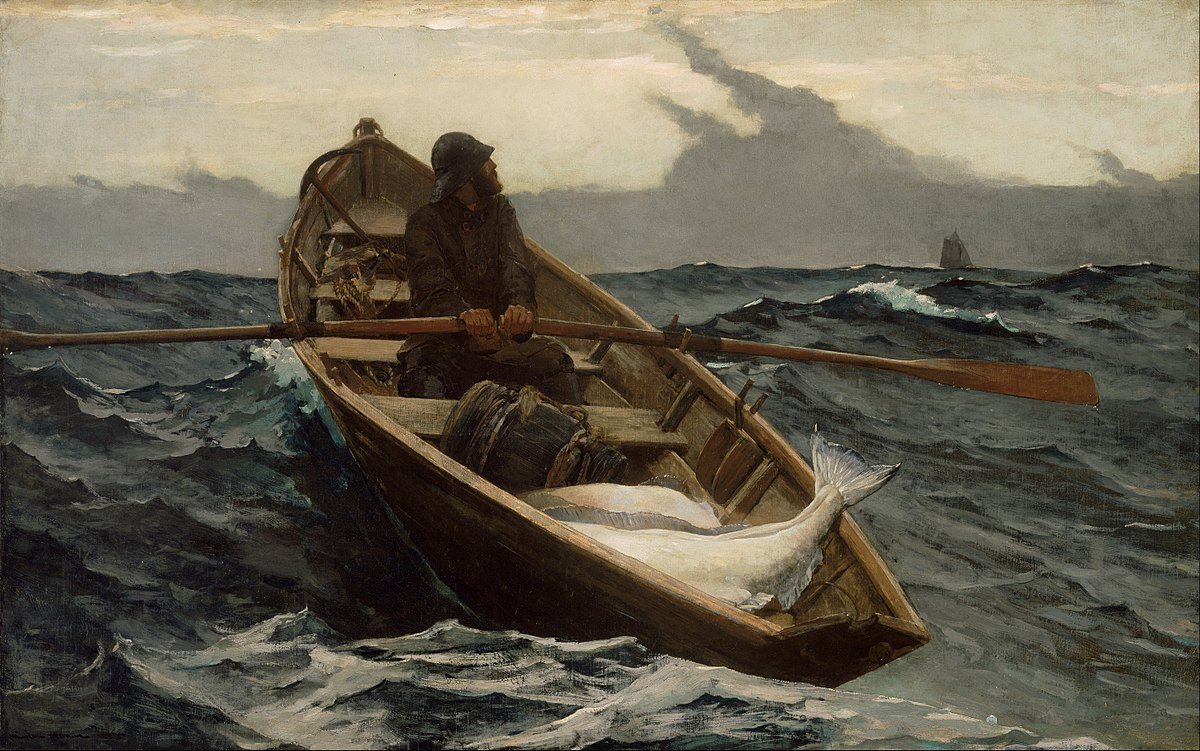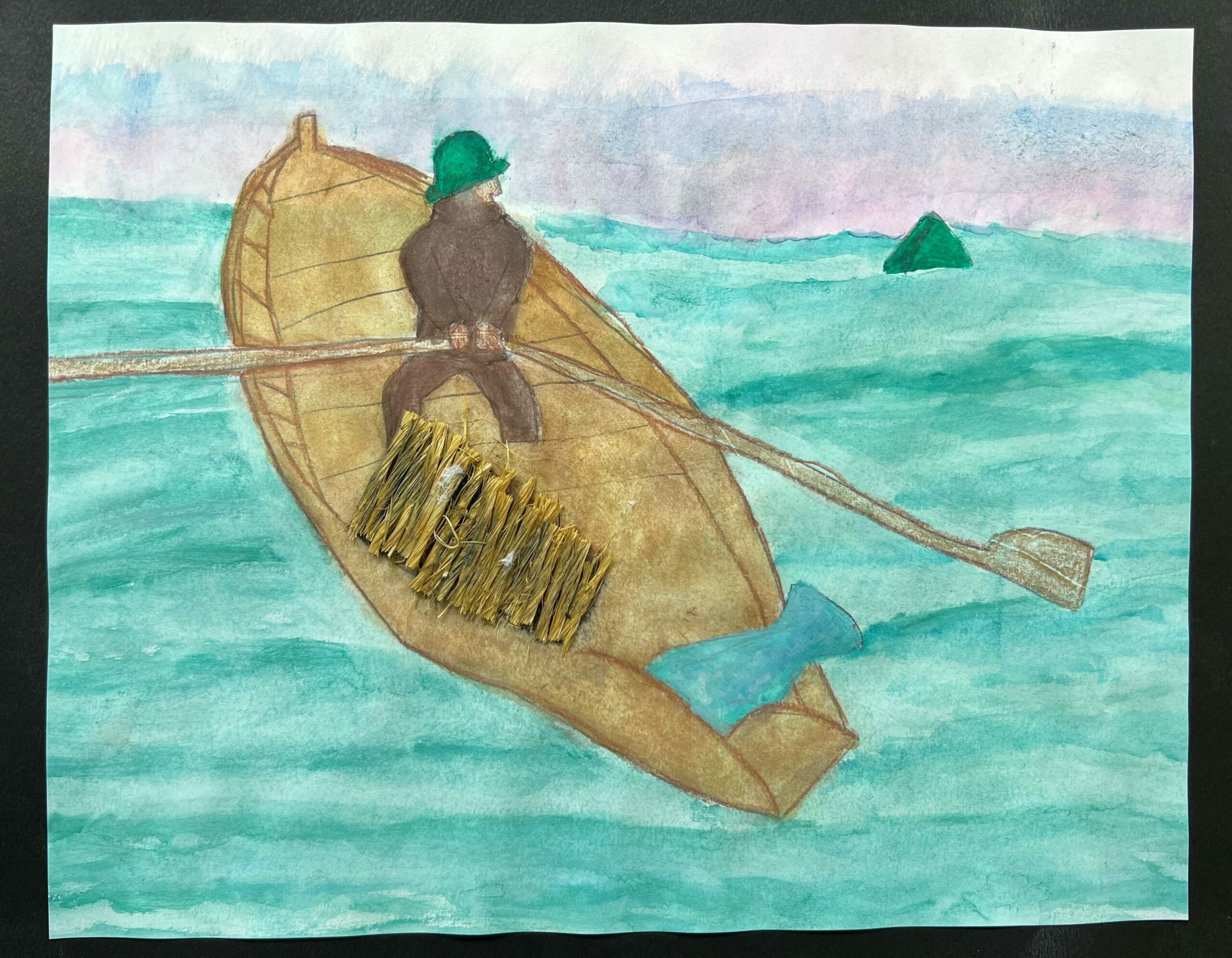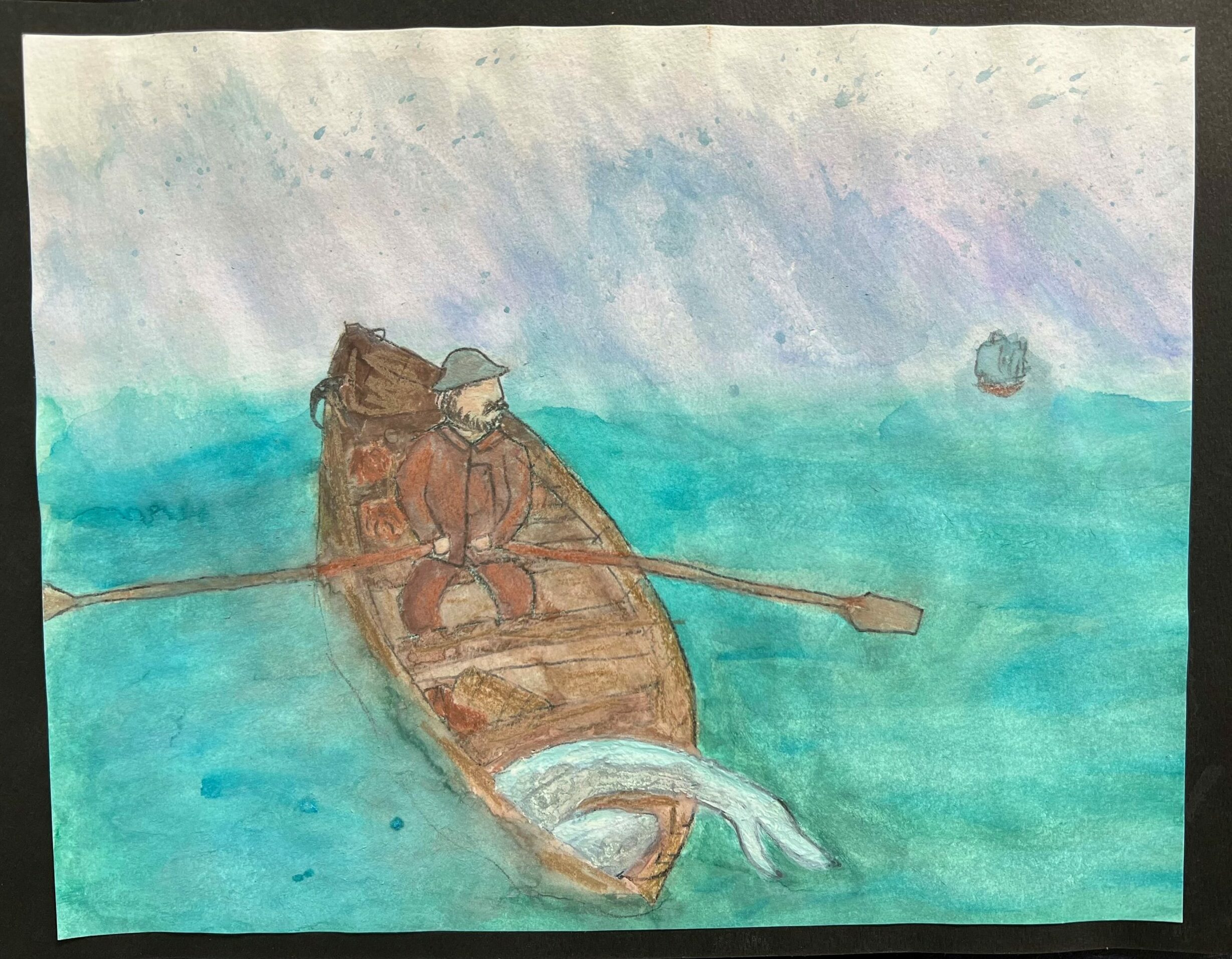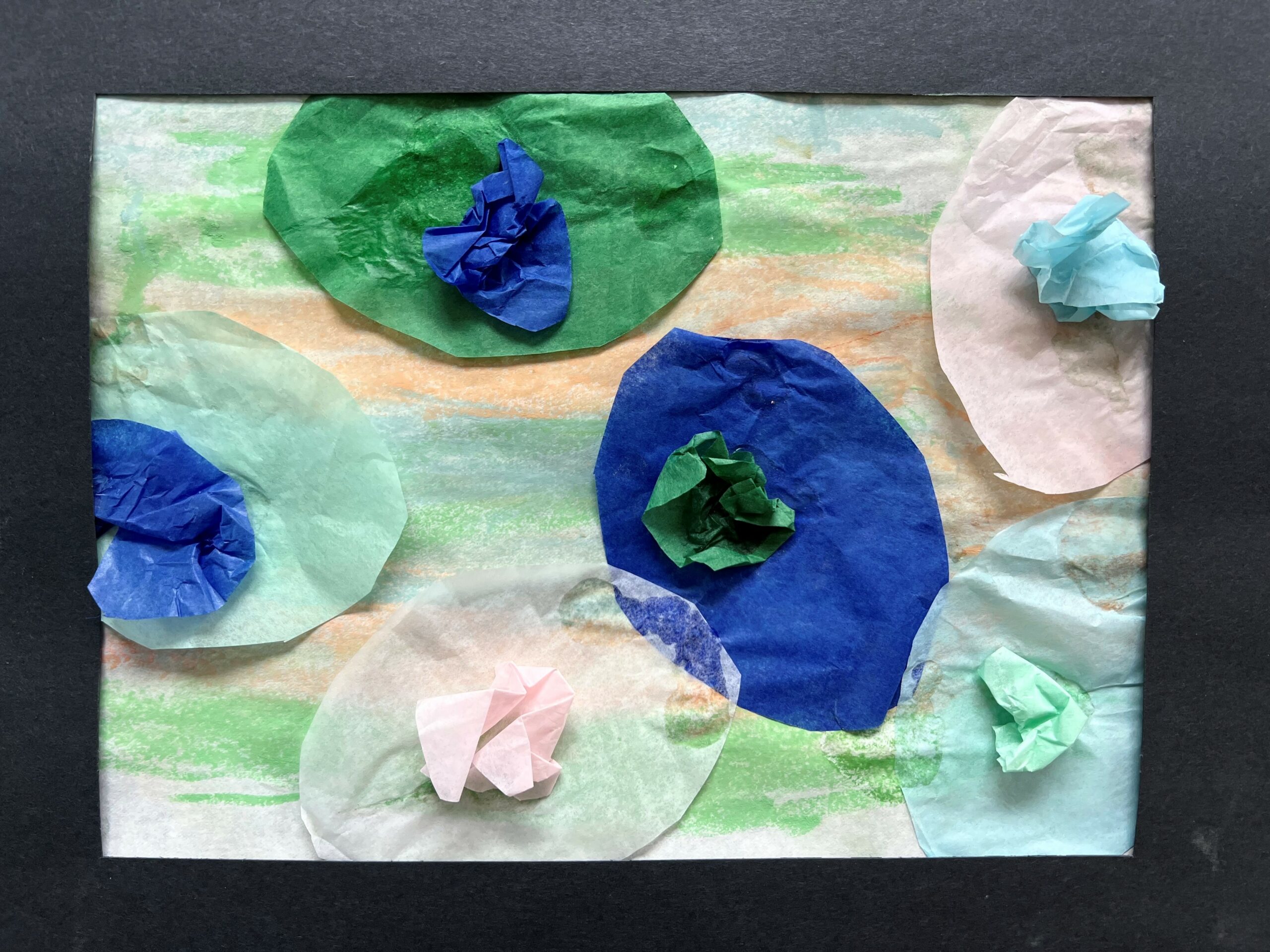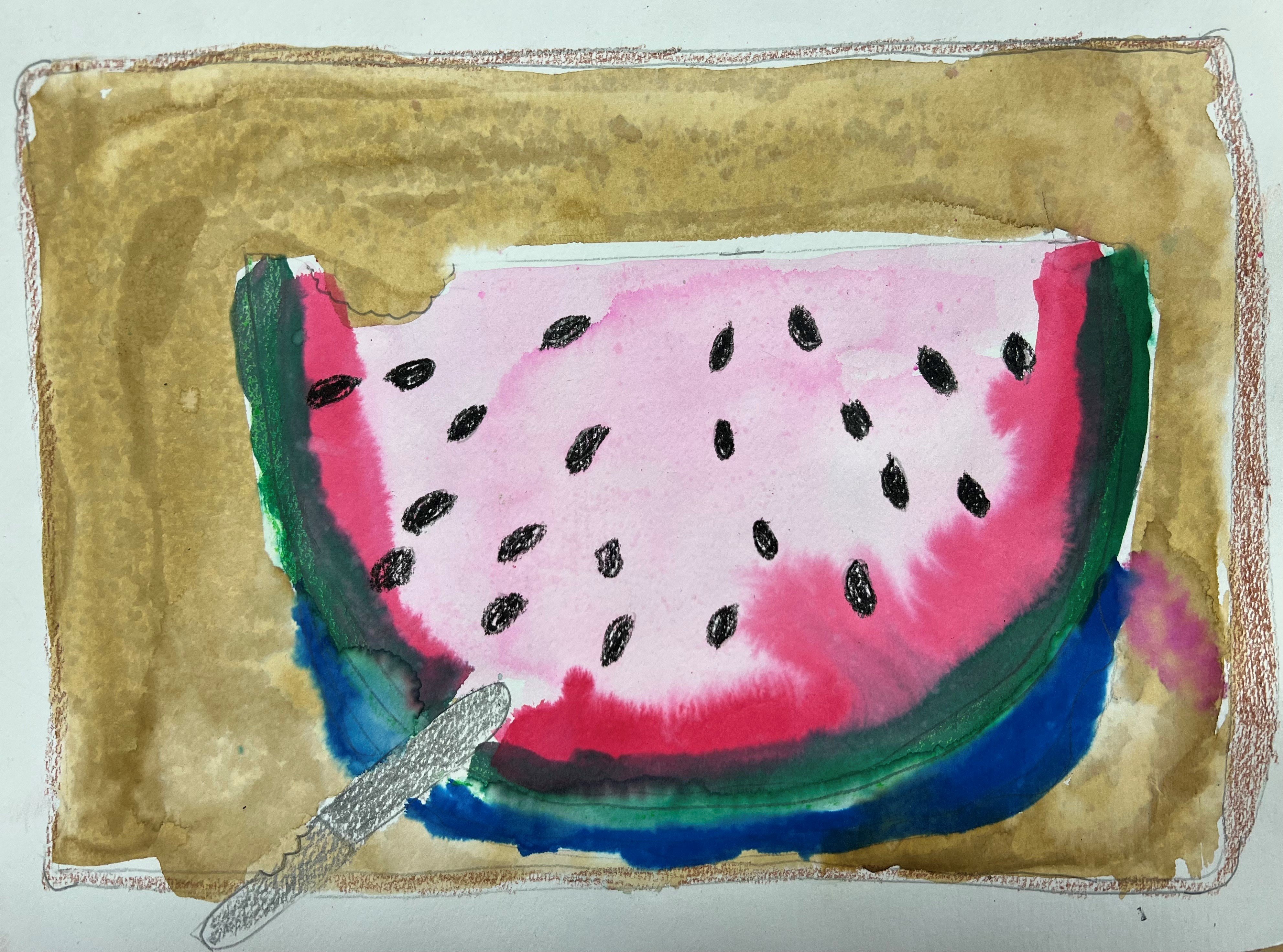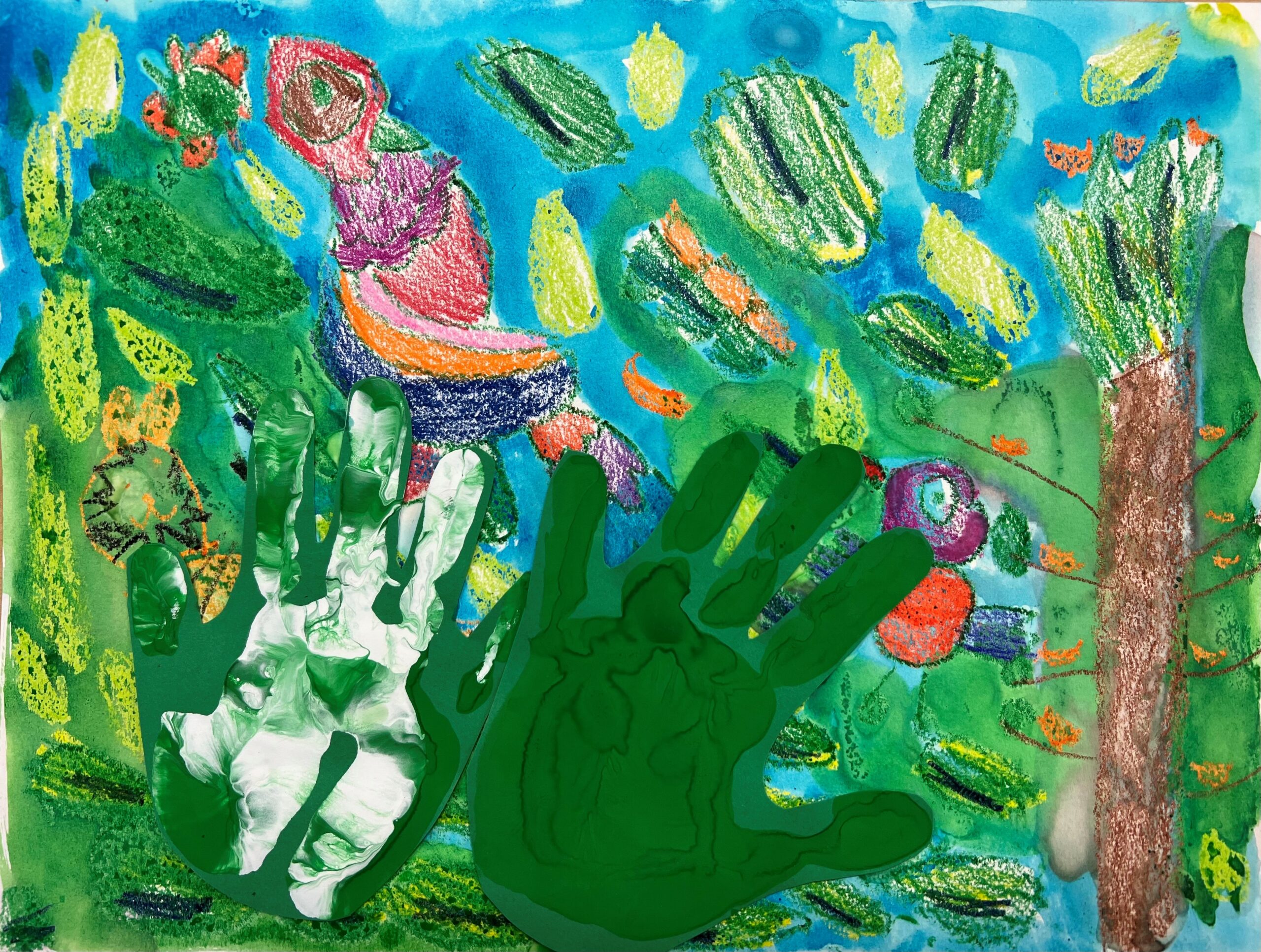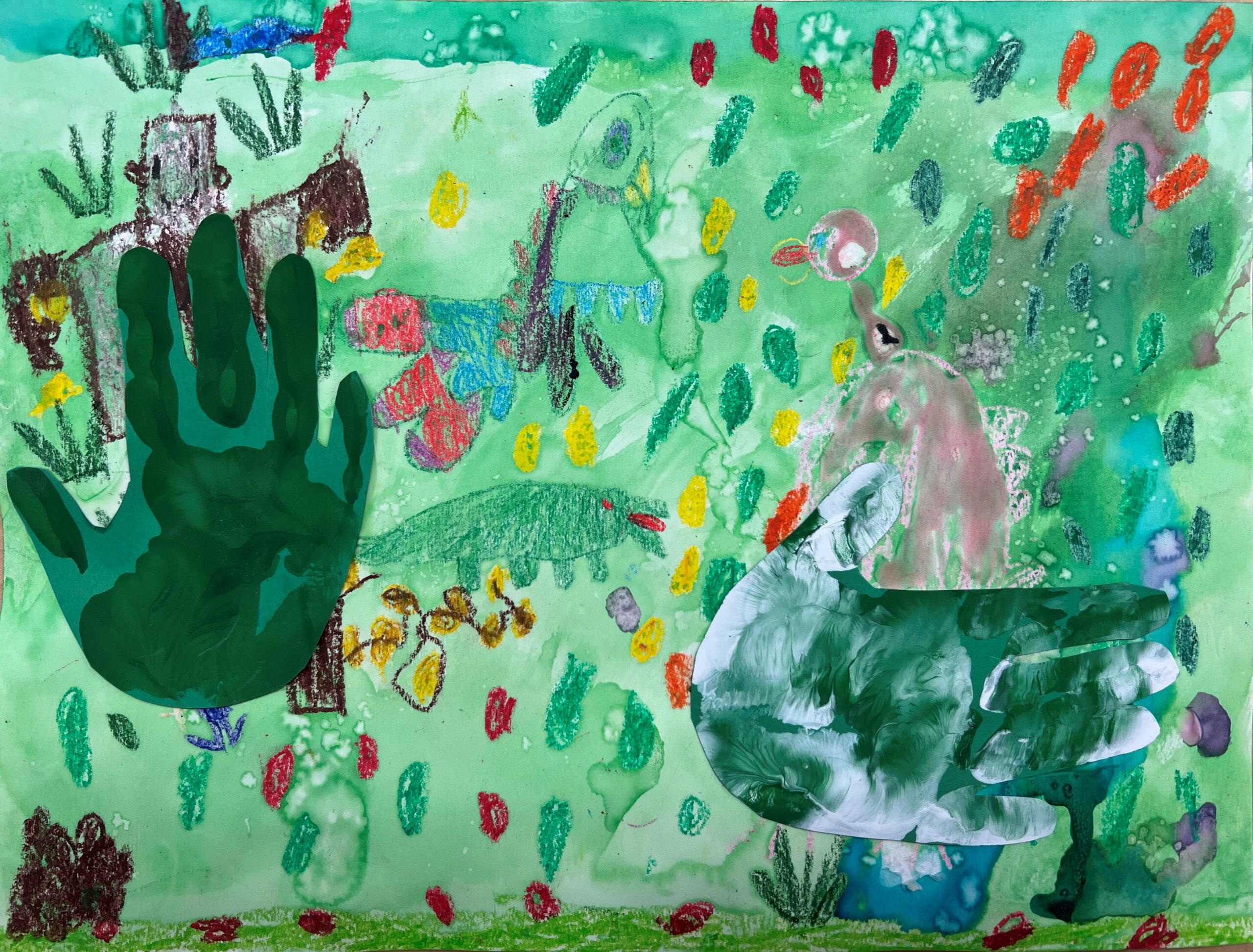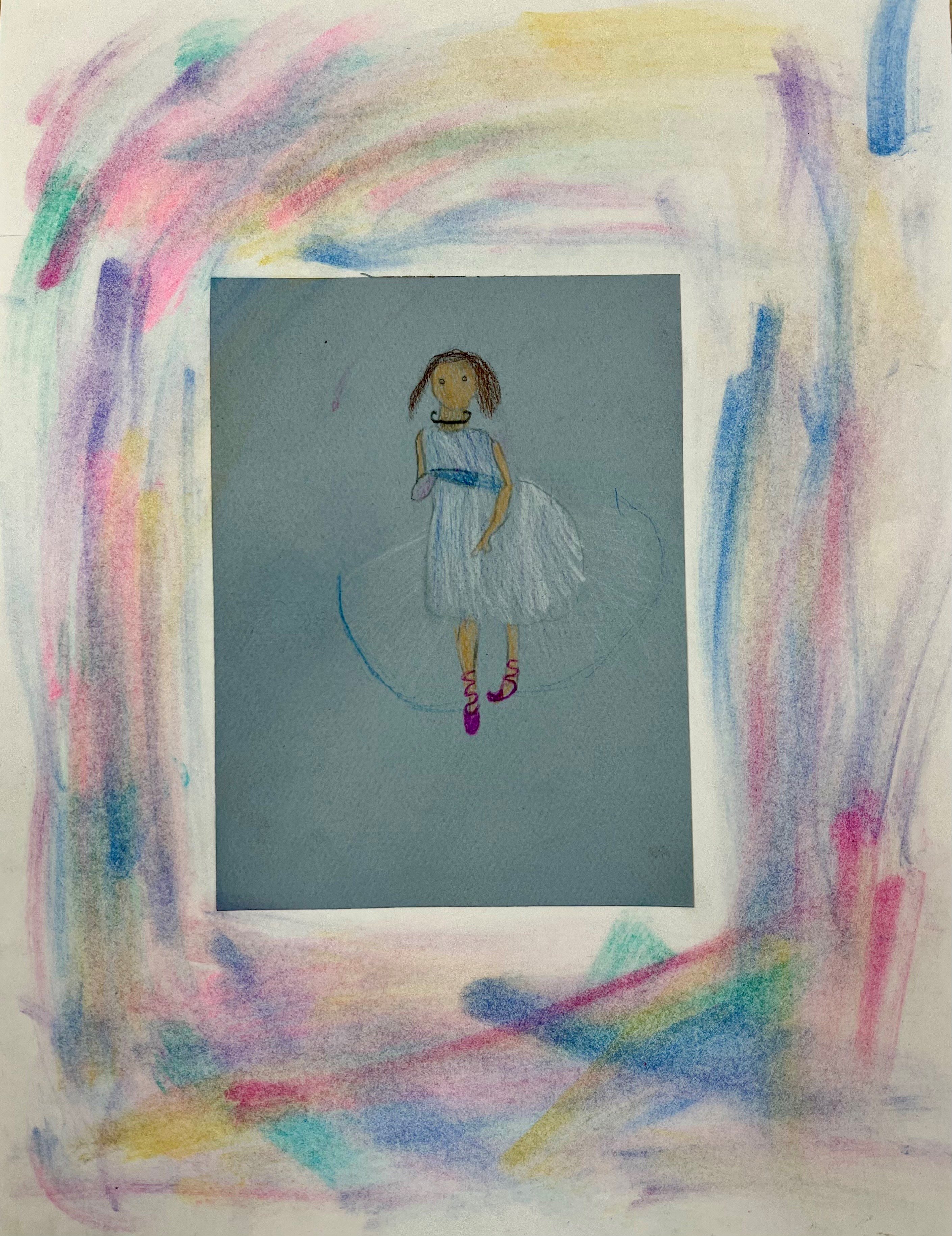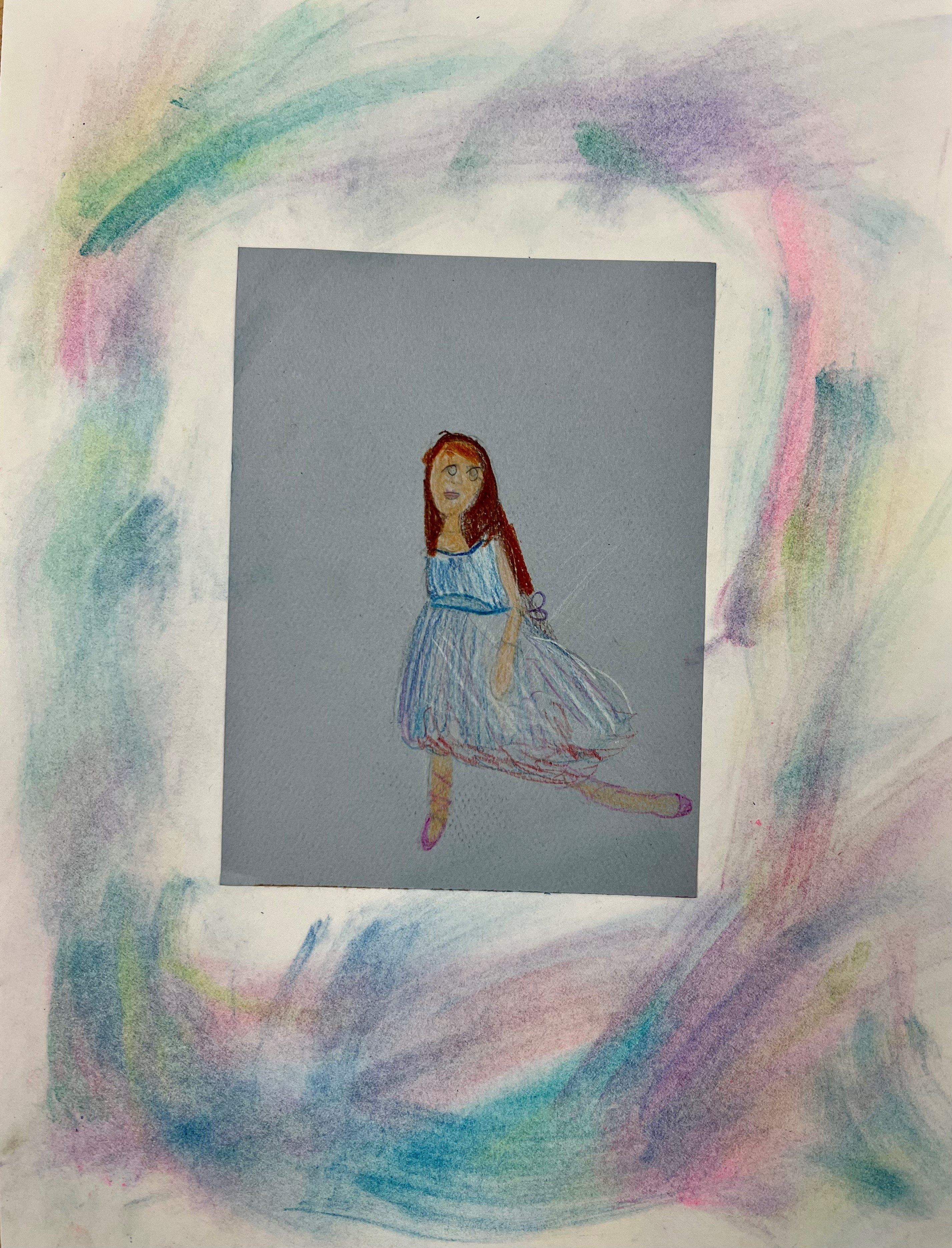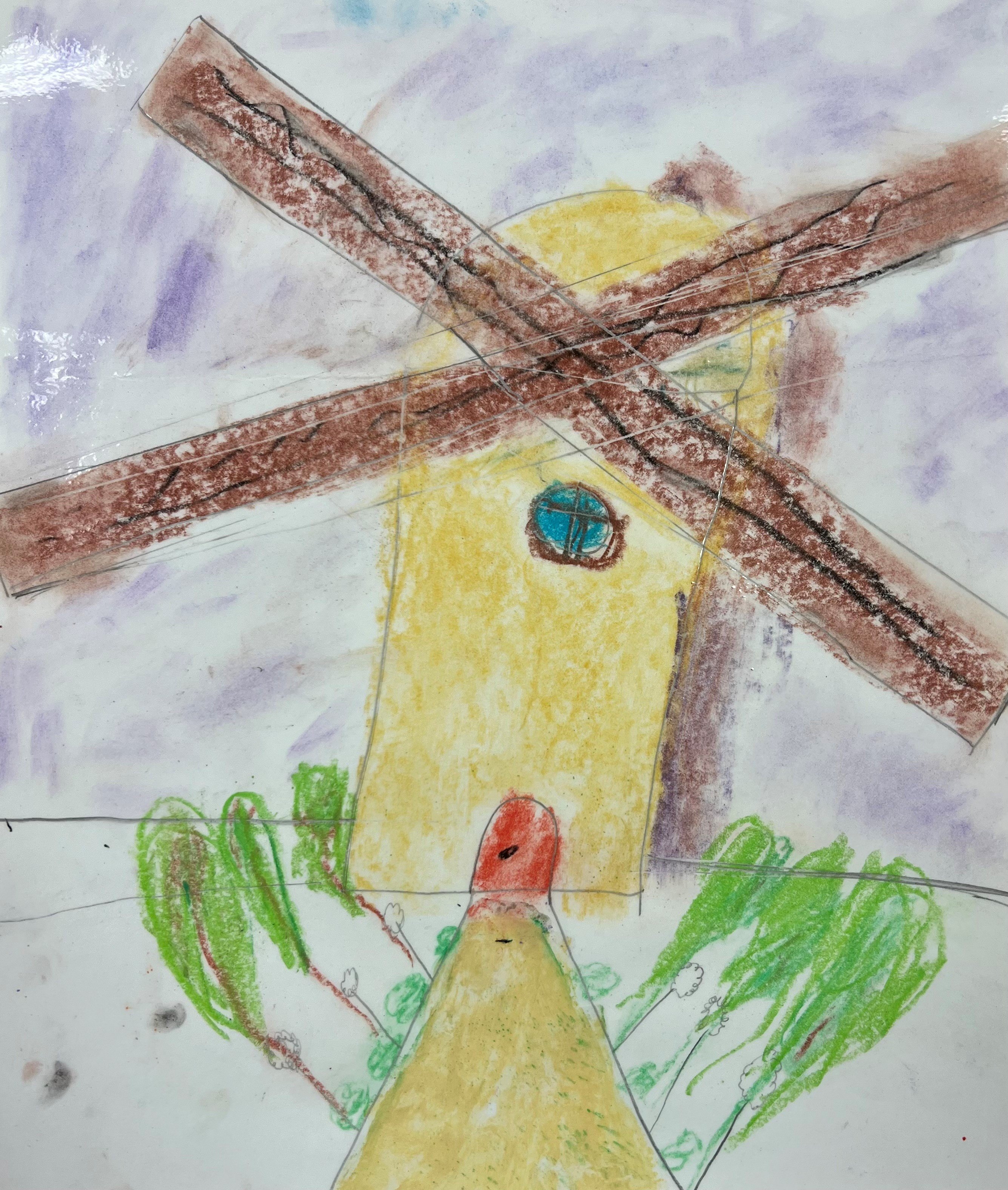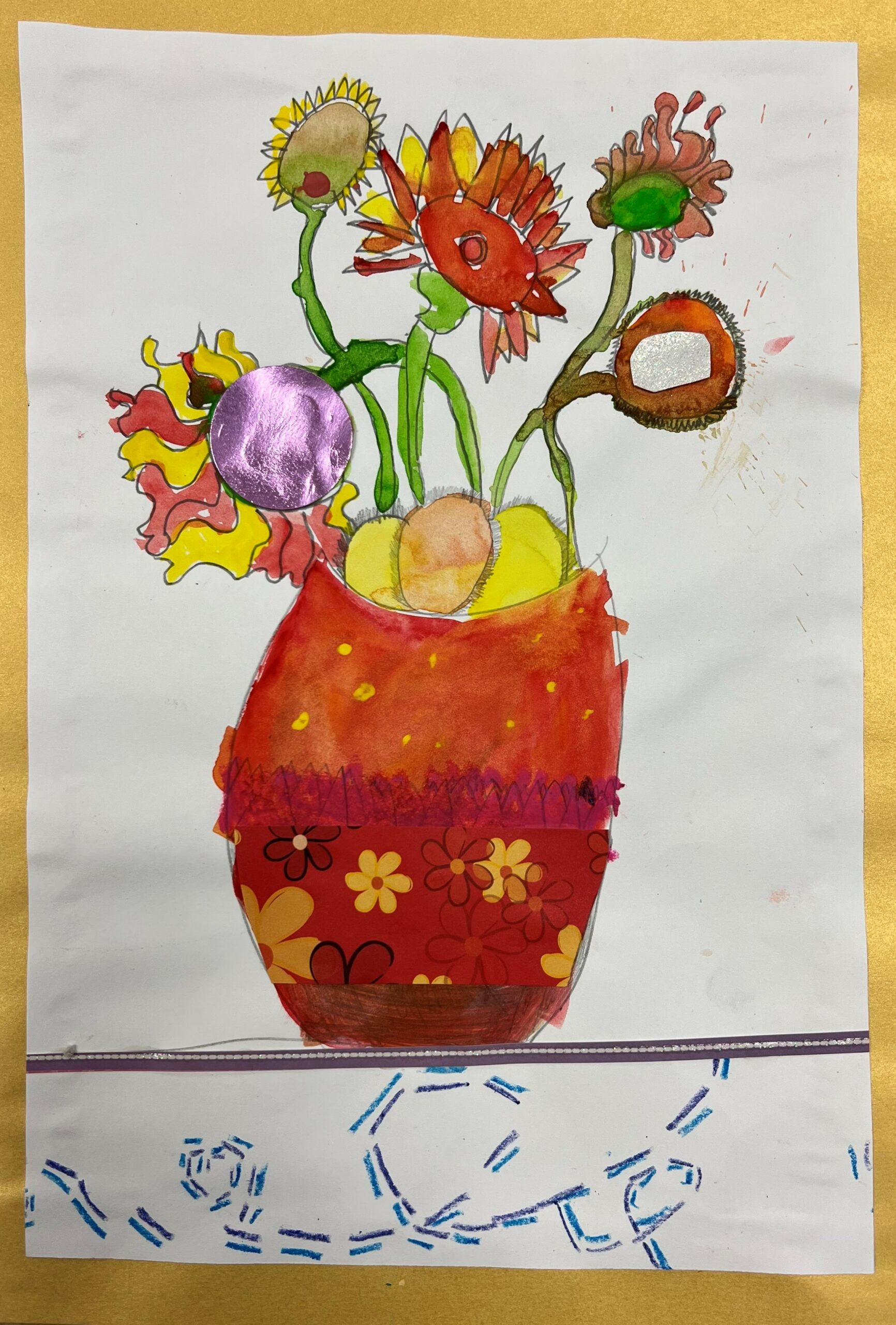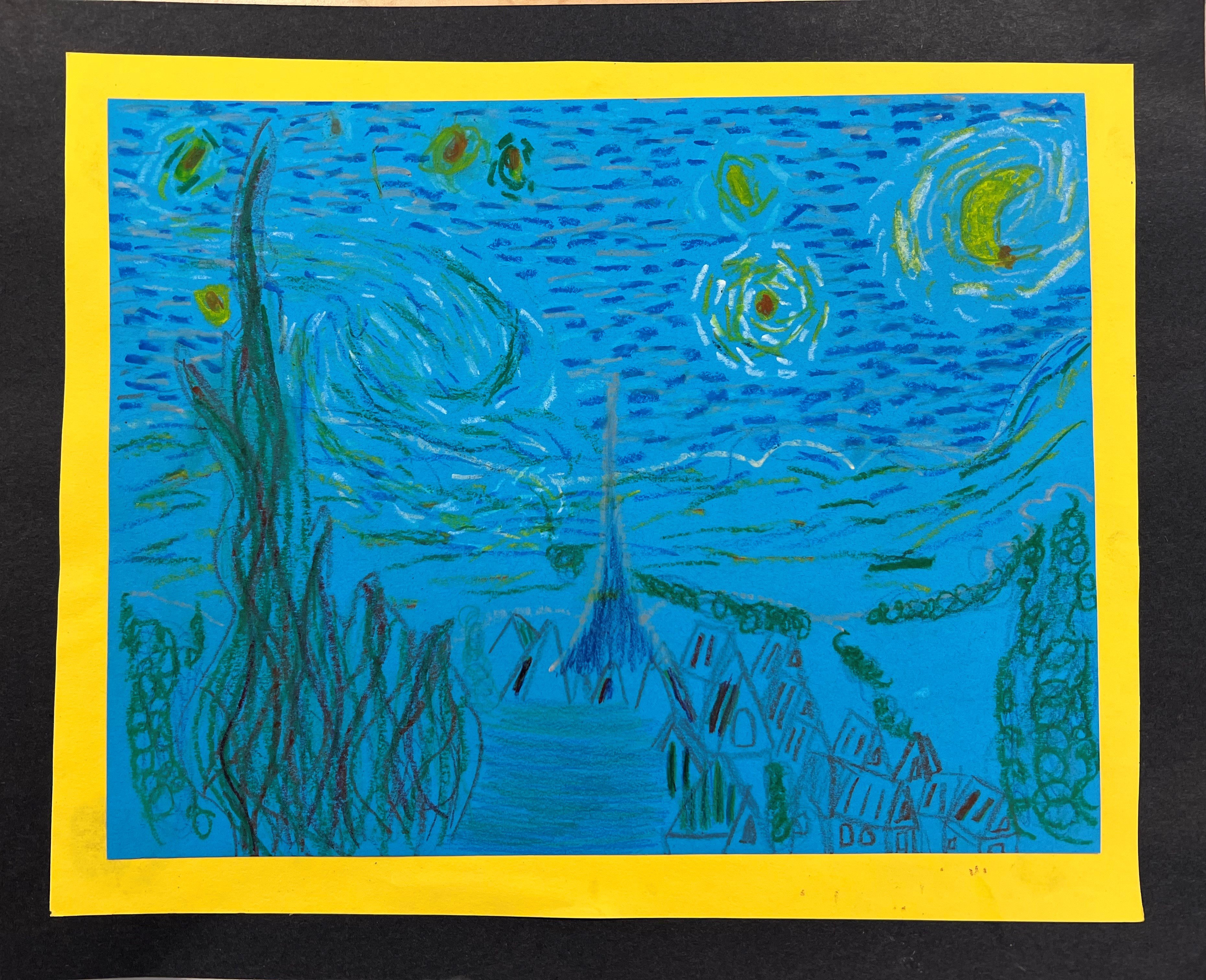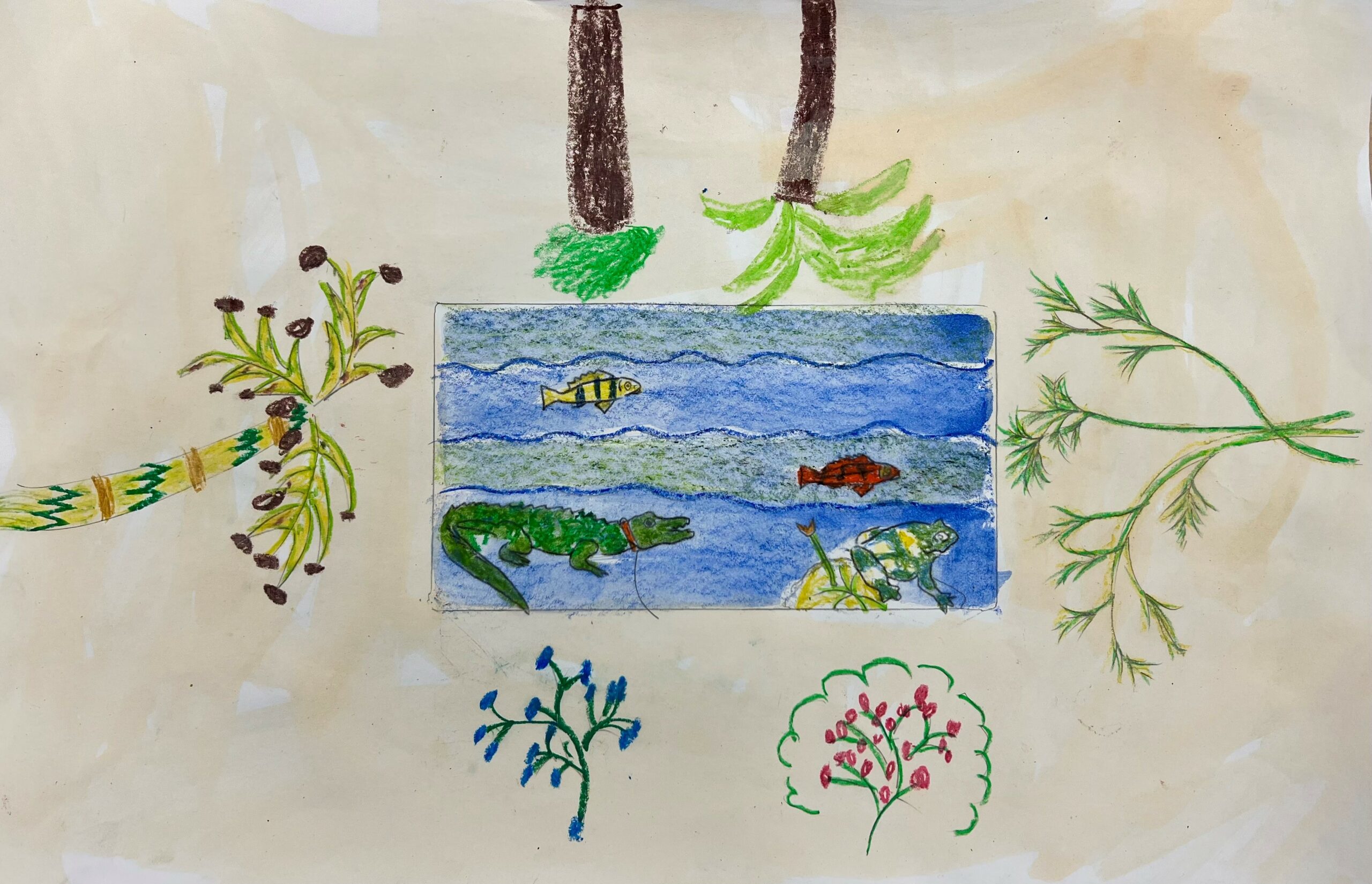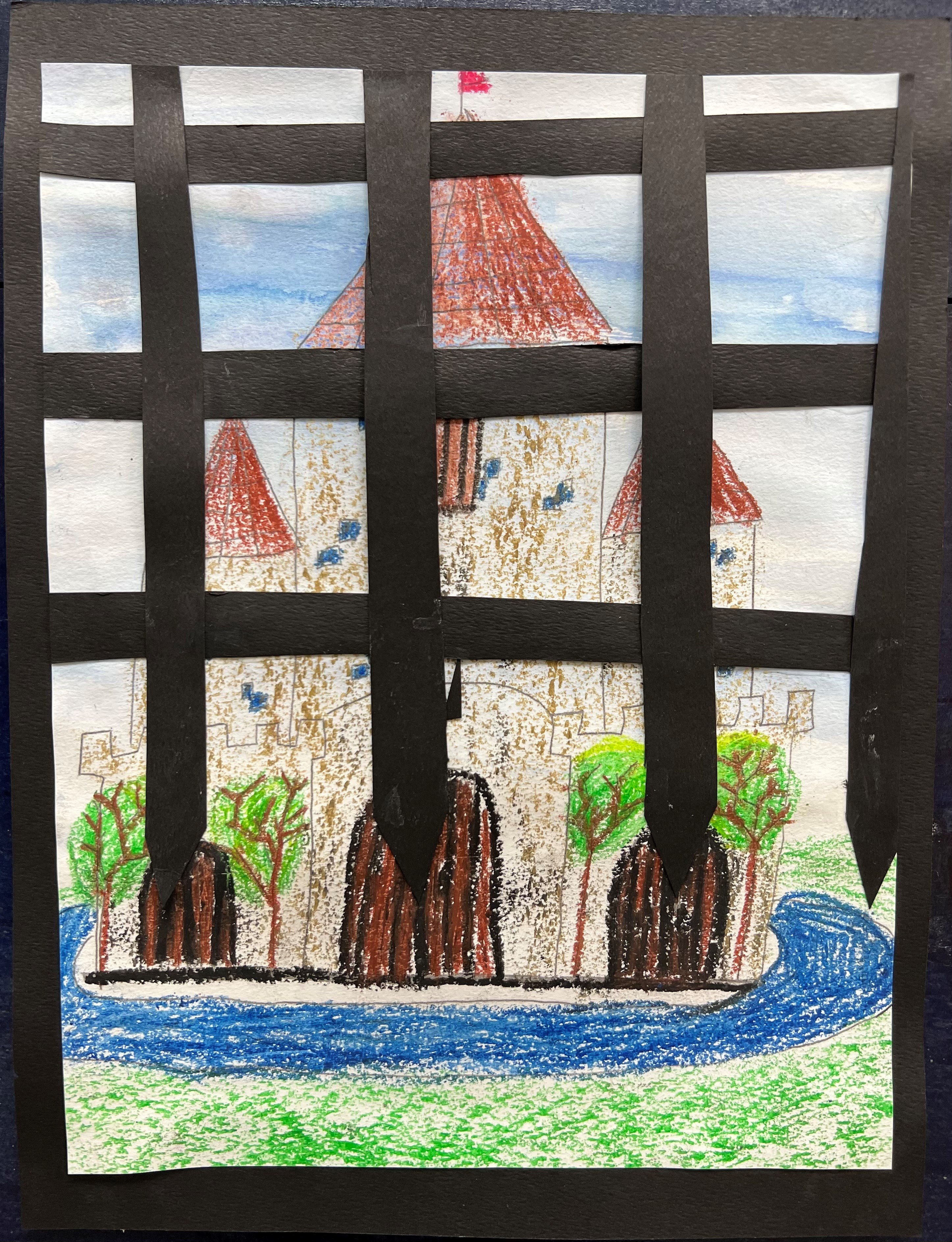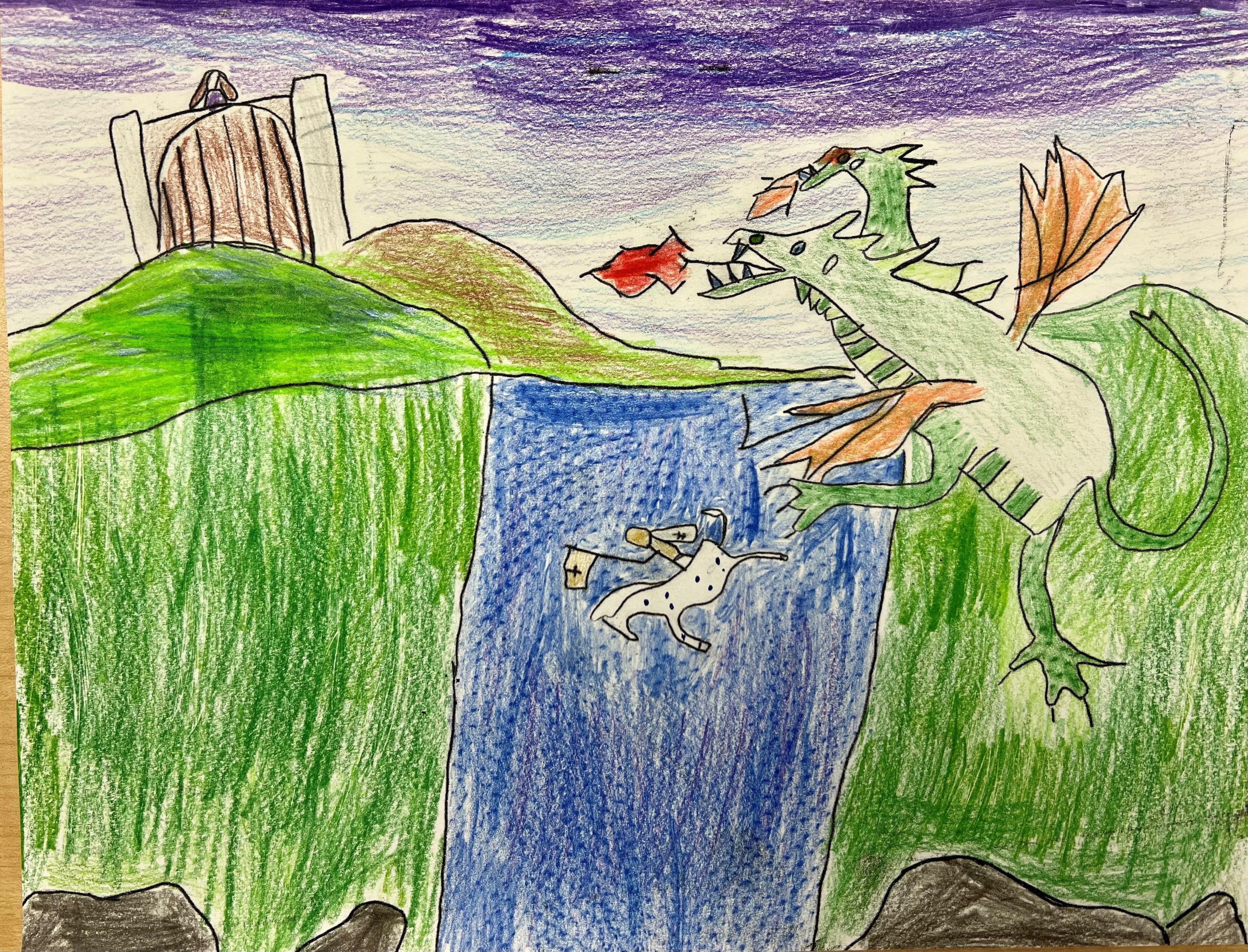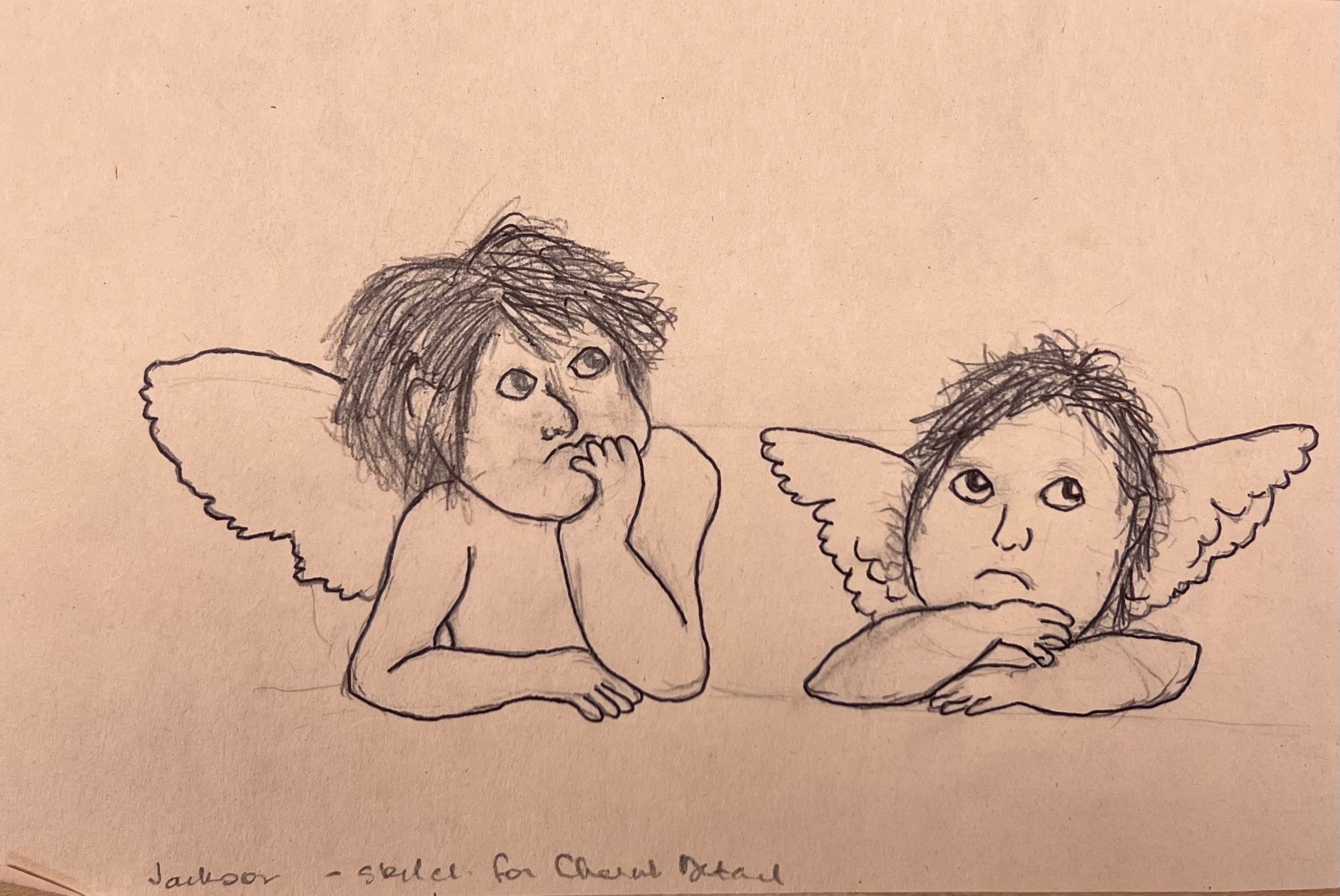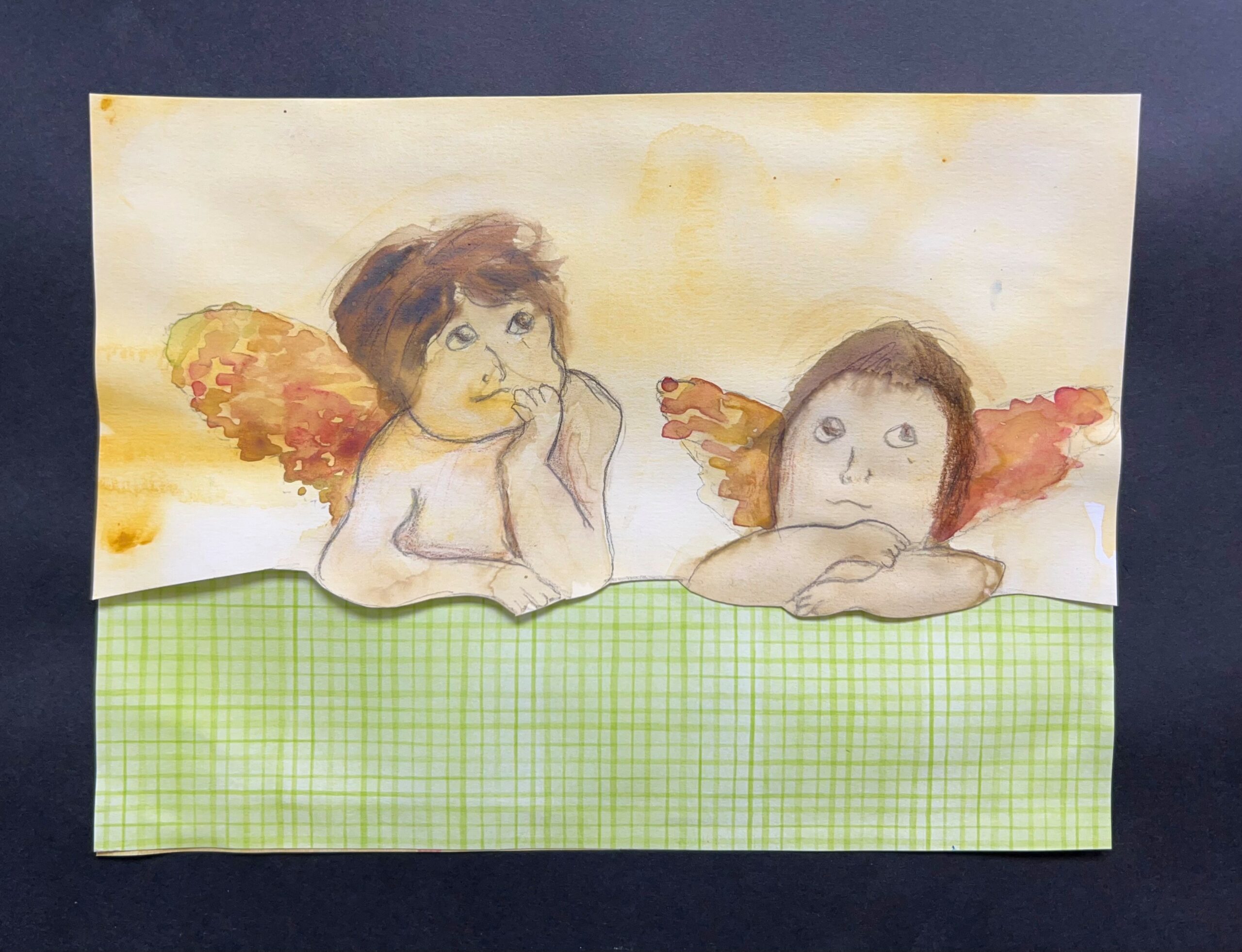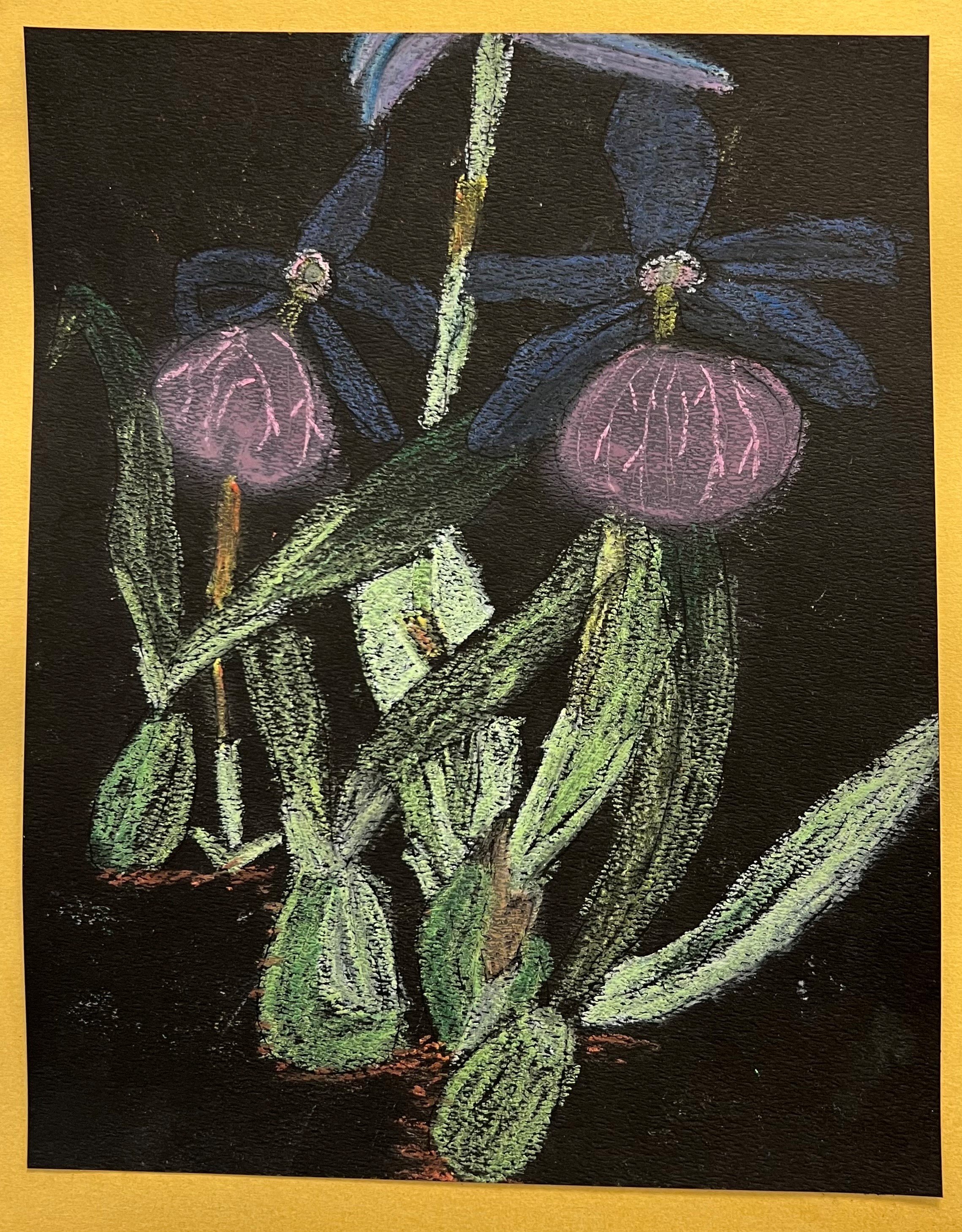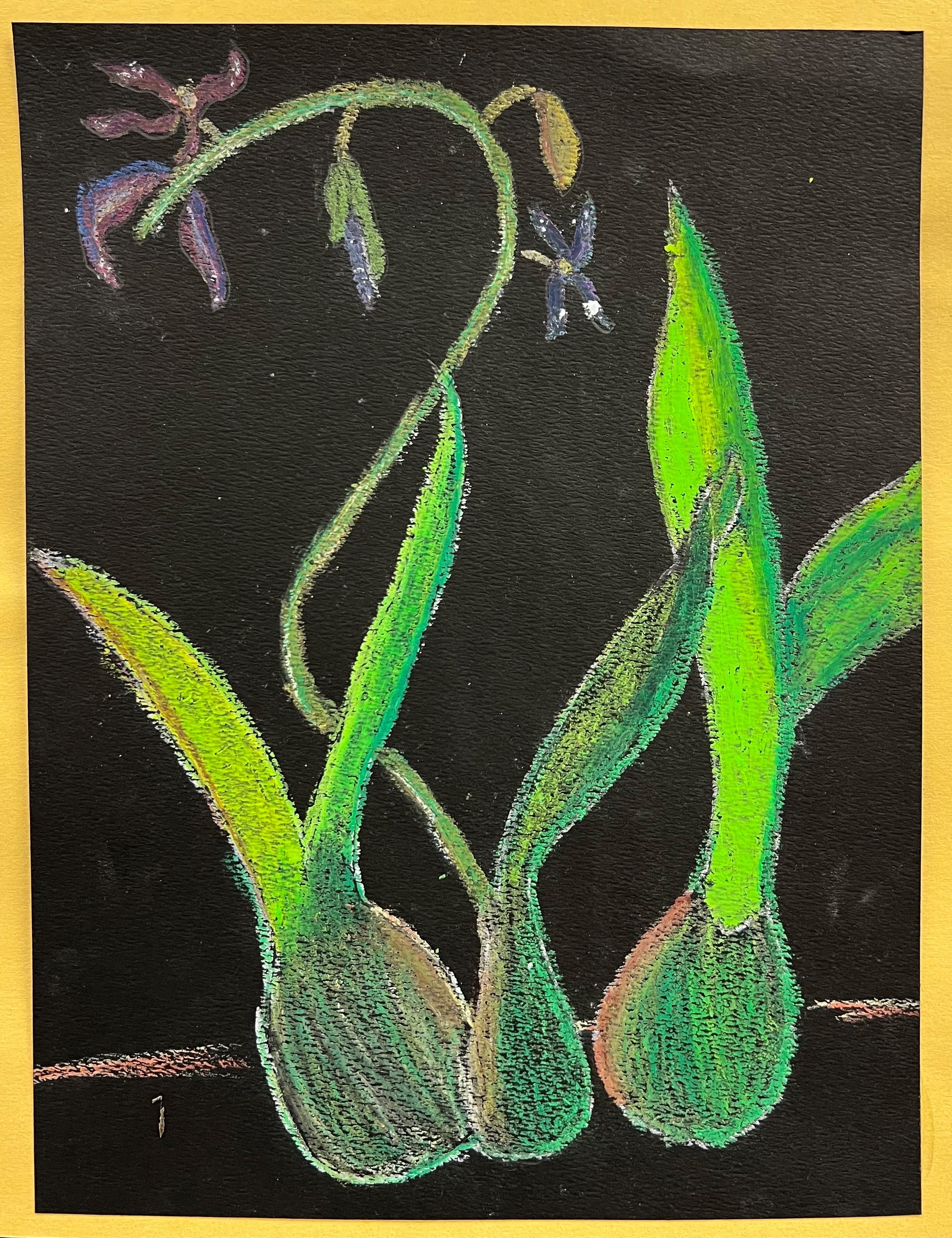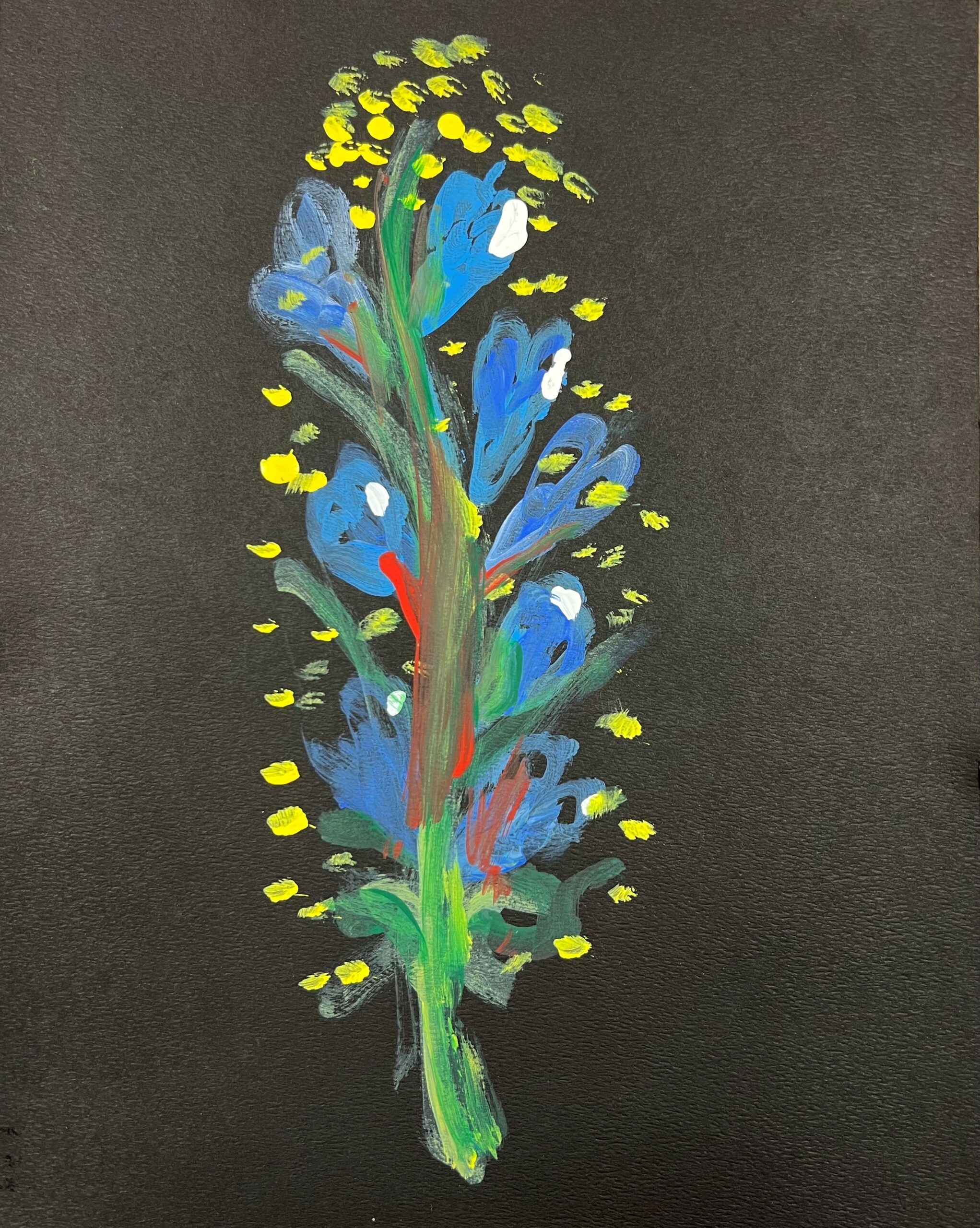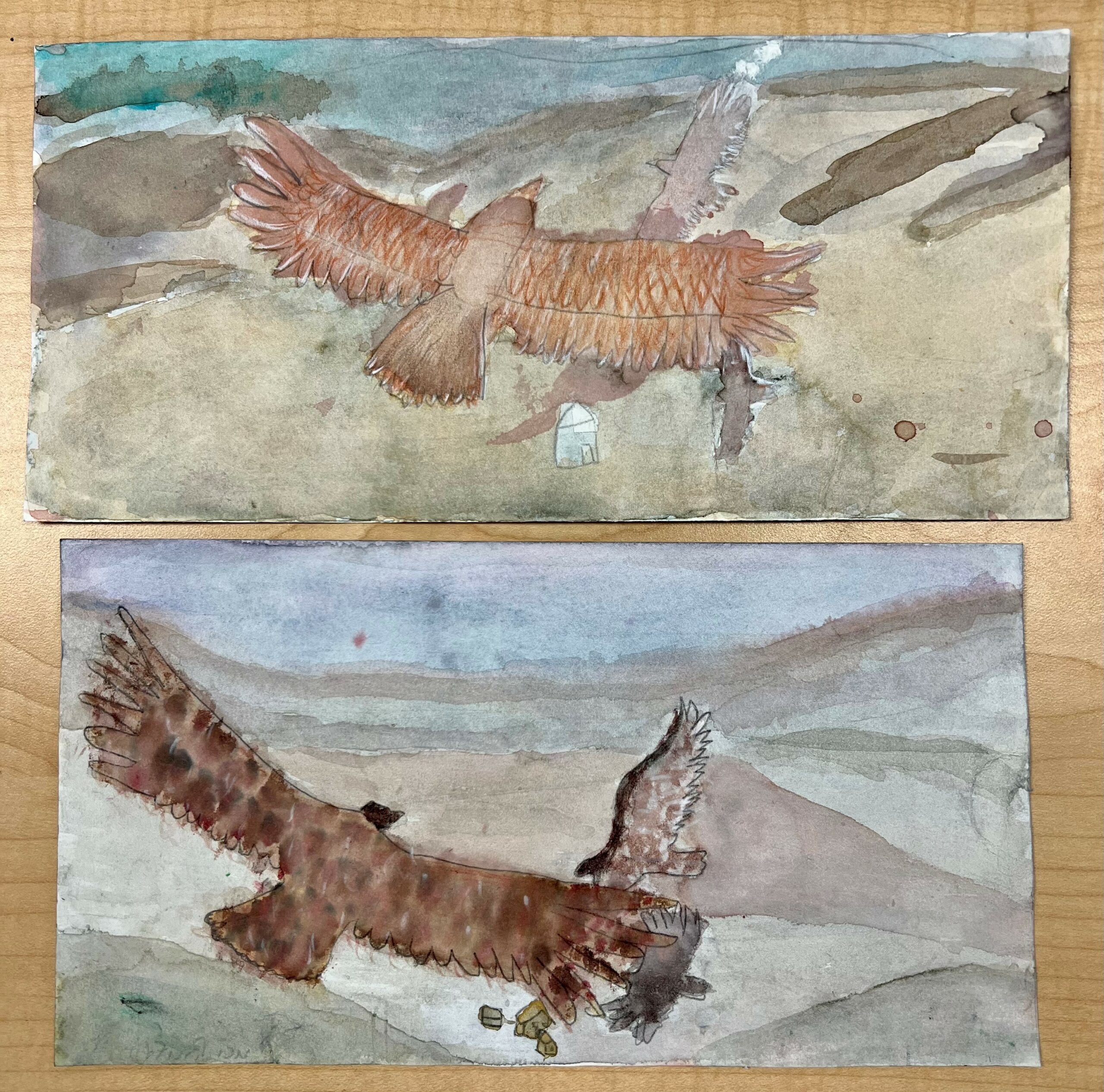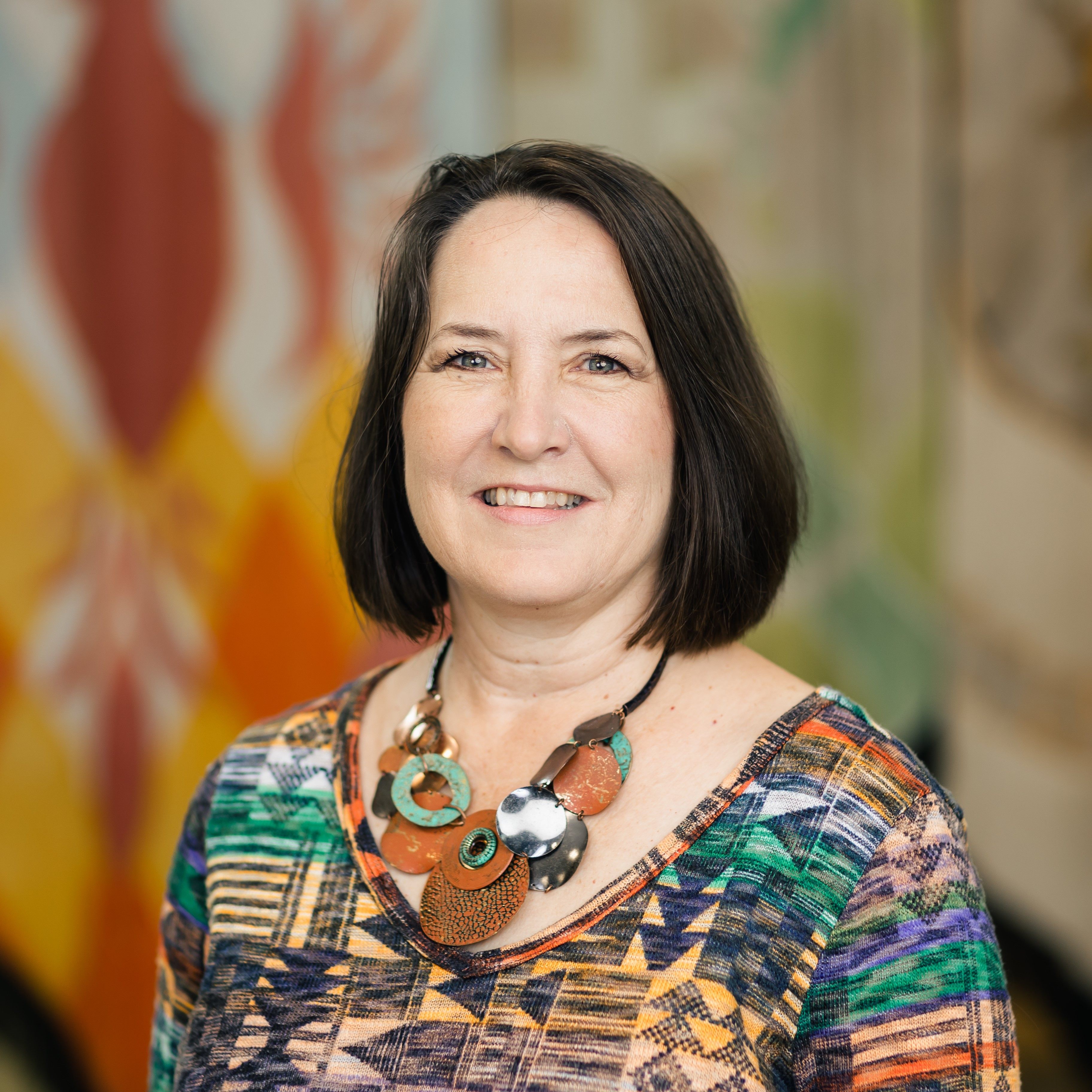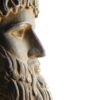The Classical Studio – Integrating Art in the Classical Christian Classroom
By Diana Cox, Grammar School Art Teacher
At Providence Classical School, our goal is always to instill in students a love for the good, the true, and the beautiful. Grammar School Art teacher Diana Cox recently described how she develops art projects that draw children closer to God while integrating what they’re learning in the classroom and inspiring in them a love of visual arts. Read on for more information about what PCS students are exploring in the classical art studio!
Want to learn more about how Providence Classical School teaches students
to look for the truth, goodness, and beauty in all subject areas?
Italian genius Leonardo da Vinci practiced the habit of finding existing connections and even forming new ones across academic disciplines. He made countless sketches in preparation for painting individual or group portraits such as The Mona Lisa or The Last Supper. His vigorous and continual research of anatomy, human movement, and interest in other subjects such as nature studies and perspective drawing inform his compositions and give credence to the practice of uniting varying disciplines of study within a single piece of workmanship.
In like stead, in the classical Christian education (CCE) tradition, I intentionally create conditions for interdisciplinary learning through art that deepens students’ knowledge and spurs scholarly inquiry to the glory of God, not man. By selecting subject matter that connects to core subjects such as Bible, math, language arts, science, and history, the study of art naturally reinforces the unity of knowledge and invigorates the hearts and minds of the learners.
The Fog Warning – Winslow Homer
Painting as an Example of Obedience
For example, while uncommon fog mystically settled across the acres of Providence Classical School in January, our fifth-grade artists were introduced to a famous American masterpiece titled The Fog Warning by Winslow Homer. As students drew the lone deep-sea fisherman in a dinky dory boat, tilted from his catch of heavy halibut, I introduced the painting as an example of obedience.
“What will happen to the fisherman if he ignores the fog warning from the master ship?”
They excitedly shared some possible outcomes, then estimated how high the fog hovered and compared it to miles of thick sea fog. I encouraged them to expand their thinking by stepping into the masterpiece through their five senses. For example, “What might you taste in this painting? What sounds might you hear? Do you smell anything? What do you see in the boat? Describe any textures you recognize.” Again asking, “What might be the result of not heeding the master ship?”
Most students related this situation to not listening and obeying their parents readily. In this moment, they realized the cost of disobedience.
Furthermore, students were in awe that Winslow Homer prepared weekly sketches for Harper’s Weekly as an artist correspondent during the Civil War. They reflected on the courage required to be on the front lines with only a pencil and paper in hand.
During another studio session, boys and girls recited “The Sea” by James Reeves, a metaphorical poem comparing the sea to a hungry dog. To further pique their interest in painting the sea, the boys and girls read portions of the poem aloud and, like a game, learned to pause and switch reader groups when encountering punctuation marks. (This integrates wonderfully with what they’re learning in Grammar.)
In the classical Christian art room, learning is a creative, thought-provoking, and moving experience.
Once students’ interest in a subject peak through forming connections, the hard labor of copy work (drawing and painting) to recreate a masterpiece becomes a delight rather than a burden. For children with anxiety about artmaking or who struggle to pay attention during lessons, kinetic movements invite immediate engagement in the learning process.
A peek into other grade level art classes would find pre-K students considering the beauty of hard labor as seen through the eyes of French Realist painter Jean Francois Millet or painting lily ponds in the style of Monet using both liquid concentrated watercolor and glue work with tissue paper and sidewalk chalk. They learn to identify the elements of art and develop fine and large motor skills while marching, chanting, and singing about lines, shapes, and color. While forming mice out of clay, addition and subtraction methods are introduced reinforcing their study of math in homeroom.
Kinder artists compose jungle scenes from their imagination while learning to use various shades of green and art mediums such as tempera, oil pastel, and watercolor. They paint a still life of watermelon in the style of Sarah Miriam Peale, the first female American artist to have work exhibited. They also meet Charles Peale who founded the first Museum of Natural Science in Philadelphia, PA, then share their thoughts on what it would be like to live full-time, like his family, in a museum with the mastodon bones and other collections Peale displayed. Further, learning that Mr. Peale named his many children after famous artists and inventors, students discuss which name they would prefer.
At the same time that Kindergartners are wearing costumes of Presidents, presenting songs about America, and delivering biographical speeches, they engage in drawing ¾ view portraits of the first American president. They learn that the most famous portrait in the world was drawn by Gilbert Stuart who fled debtors’ prison in Scotland to America and sat painting portraits of up to six American presidents. Art history is fascinating and plays a huge role in cross-curricular learning!
First graders compare results of dry versus wet pastels while creating a Dutch windmill landscape painting. They participate in locating hidden symbols and portraits such as the artist Rembrandt, his wife Saskia, and their dog in the famous group portrait The Night Watch. The first graders enthusiastically march to the tune of “Yankee Doodle” and strengthen their understanding of the Dutch Baroque master and his ground-breaking techniques while singing “Ye Olde Master Rembrandt.” They work in teams to create landscape garden plans for an Egyptian family and paint King Tut masks with gold acrylic and earth tones. Bible class, Humanities, Science, and Reading inform their art and vice versa.
Second graders draw Ionic columns and later form them out of clay. They consider the virtue of kindness while painting multi-media sunflowers and landscape drawings in the style of Van Gogh. A painting by Van Gogh of his postman is discussed since the postman’s family expressed kindness toward Vincent as a newcomer in town by bringing him a chair, bed, and lamp for his empty room. A lesson on Renoir finds students jumping for an opportunity to teach others how to plié or stand in third position. They embrace the challenge of drawing a ballerina using their knowledge of lines and shapes, then enthusiastically experiment with a chalk rub technique in an Impressionist manner.
Third graders create multi-media castles with a portcullis and compose a scene from the legend of St. George and the Dragon, beginning with thumbnail sketches, then proceeding to varying methods for creating interesting textures with colored pencils. Children love stories, and in the classical education model, they come alive as if the figures of history are enchanted. In a Christian school like Providence Classical School, this enchantment is directed toward the worship of Christ, the centerpiece of our adoration.
Fourth graders imitate High Renaissance master Raphael’s habits of completing commissions and other virtues such as being pleasant, teachable, humble, and inventive. They practice blending face tones and painting angel wings. While creating, students, already studying Shakespeare and theatre, enjoy acting out the different studio habits of Leonardo, Michelangelo, Raphael, and Durer.
Sixth graders gain an appreciation for God’s provision of the turkey vulture while recreating Soaring by famous American artist Andrew Wyeth. They kettle their arms and share facts about the birds they are painting. They are intrigued that the bird doesn’t wake up until 10 a.m. and share if they are early or late risers. Our beautiful PCS property provides opportunities to see birds of prey soaring throughout the day. Again, the students make connections between art and history – the turkey vultures soaring over a lonely farmhouse evoke the feeling of B52 bombers hovering overhead during World War II.
We honor God as Creator through our own creative expressions. It is a tremendous privilege to guide Providence Classical School students as they learn to appreciate and emulate the true, the good, and the beautiful found in every subject they study. Also, it is an eternal joy to witness their transformation into fully-fledged believers, expressing their own creative worship of our Savior and King.
For we are God’s handiwork, created in Christ Jesus to do good works, which God prepared in advance for us to do.
Ephesians 2:10
About Diana Cox:
Diana Cox is in her 16th year of teaching at Providence Classical School. She developed the classical Christian art curriculum at PCS for grades Pre-K through 6th using her integrated K.A.L.M. approach (Kinesthetic, Artistic, Linguistic, and Musical). Her art lessons include original poetry, songs, and movements to the delight of her students.
Mrs. Cox received a Bachelor of Science degree from The University of Texas at Austin in General Home Economics which included coursework in interior design, textiles and clothing, child development, and nutrition. She has been married for 32 years to Paul, an incredible husband, worship leader, guitarist, songwriter, loan officer, and father to their four adult children. Together, they’ve ministered in churches, prisons, and at special events using the fine arts of music, art, and drama.
Looking for a school that will partner with you as you raise your children to impact their culture for Christ? Click here to watch a video about how Providence Classical School can make a difference in the life of your child and your family, and schedule a tour today!
Keep reading for more information on how fine arts programs are integrated into our uniquely classical and Christian education at Providence Classical School!



